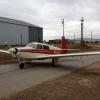-
Posts
3,778 -
Joined
-
Last visited
-
Days Won
13
Tagged with:

N601RX replied to N177MC's topic in Vintage Mooneys (pre-J models)

N601RX replied to jezzie's topic in Modern Mooney Discussion

N601RX replied to isaacpr7's topic in Vintage Mooneys (pre-J models)

N601RX replied to isaacpr7's topic in Vintage Mooneys (pre-J models)

N601RX replied to Guitarmaster's topic in Vintage Mooneys (pre-J models)

N601RX replied to Jim Peace's topic in Vintage Mooneys (pre-J models)

N601RX replied to Jim Peace's topic in Vintage Mooneys (pre-J models)
We have placed cookies on your device to help make this website better. You can adjust your cookie settings, otherwise we'll assume you're okay to continue.